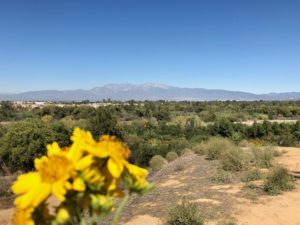September Great Story by Marisa Perez-Reyes, 2018-19 Inland Empire Water Fellow
Although I wrote that I believed “the resource challenges of today [would] require that we adopt adaptive, interconnected, and empathy-infused models of governance” in my CivicSpark application essay, I’m not sure that I knew what that meant at the time. I knew little about California water governance, short of the circus of bureaucratic and political inefficiencies and failures depicted in Marc Reisner’s “Cadillac Desert.” Further entrenching my preconceived notions of governance in general was my upbringing on the East Coast in close proximity to Washington, D.C., where gridlock has been the dominant energy for the better part of my lifetime. Although I touted an understanding of complexity, I had few points of reference to understand what that could like in reality; I suppose I imagined water resources management as a disorganized mess of a system that “didn’t work” and needed to be “saved” or otherwise brought to order. I understood that top down solutions didn’t make sense for regional water management, but I struggled to believe that technical solutions could come from the ground up.
What I’ve seen in my first month on the job at SAWPA, however, is a different picture. SAWPA coordinates integrated regional water management (IRWM) across the Santa Ana region. SAWPA’s IRWM approach differs from a number of other management areas in the state, however, in that rather than hiring consultants to prepare an integrated plan, SAWPA gathers active stakeholders in the watershed under the One Water, One Watershed (OWOW) initiative and, essentially, commissions them to write the integrated watershed plan. Regional plans then have the opportunity to be processed through the overall plan to pick up the “OWOW-compliant” label, incentivizing a “ground up” approach that empowers those who are already involved in the watershed to participate in integrated planning. In this way, the process provides the space for sectors that overlap in complex ways to collaborate on multi-benefit projects and to reconcile contradictory or conflicting projects up-front.
This isn’t to say that there aren’t major, contentious issues within the water world or that collaboration always works. But in the past month, as I’ve started to gain an understanding of water governance in California and met with a variety of professionals who have formed deep and admirable careers in this field, I’ve come to view the cluster of water organizations as less of a mess and more of an integrated network, each thread of which has the potential to lend greater strength and connectivity to the whole system. While I still have much to learn and California’s water systems still have much room for improvement, it is incredibly refreshing and empowering to see an American system that is adapting well to complexity.

